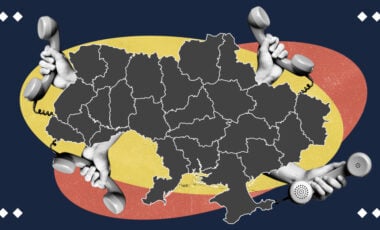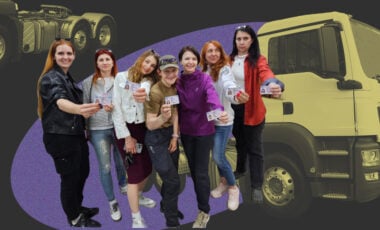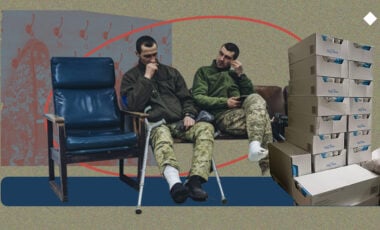Estonia repatriates 274 smuggled cultural treasures to Ukraine

Photo: Ministry of Culture and Information Policy
On Tuesday, April 30, the National Museum of the History of Ukraine displayed 274 archaeological artifacts, including 115 coins that were smuggled out of Ukraine. Estonian border guards intercepted these items, and the Republic of Estonia ultimately repatriated them to Ukraine.
The Ministry of Culture and Information Policy reports this.
"Now, along with Ukraine, the entire civilized world, which upholds international law and celebrates our country's victory, as well as the establishment of justice not only in defending territorial independence but also in respecting the legality of cultural transfer. We are grateful to everyone who has joined us in bringing back Ukrainian cultural heritage and to all those who contribute to the prosperity of our country," the acting Minister of Culture and Information Policy of Ukraine, Rostyslav Karandeev, said.

Photo: Ministry of Culture and Information Policy
The head of the ministry emphasized that Ukraine highly values the support of the Estonian people. Estonia is helping restore facilities in the Zhytomyr region, which Estonian colleagues actually patronized. In addition, in the first months of the full-scale war, Estonia sent cargoes with everything necessary for Ukrainian museums—equipment and packing materials for the evacuation of cultural values.

Photo: Ministry of Culture and Information Policy
"Estonia supported, supports, and will support Ukraine in all directions – political, economic, military, as long as it is needed. Today, I am very pleased to observe our closer cooperation in the cultural sphere despite the ongoing war. Today is a historic day. After all, the artifacts belonging to Ukraine have finally returned home. These artifacts are evidence of Ukrainian culture and identity and are Ukrainian heritage," Vahur Soosaar, Deputy Head of the Estonian Diplomatic Mission in Ukraine, said.

Photo: Ministry of Culture and Information Policy
The returned objects are:
- decorations from the Scythian period, including two pairs of embroidered plaques depicting griffins from the 4th to 3rd centuries BC and a casing, possibly from a wooden vessel or horn, from the same period. Similar objects have been found in many "royal" graves in Ukraine, such as the Tovsta Mohyla, Solokha, and Haymanova Mohyla mounds;
- Pre-Roman and Roman jewelry: pendants shaped like cylinders and beads, 1st century BC – 1st century AD. Similar adornments have been discovered in the Eastern region of Crimea (Bosporian kingdom), such as gold beads from the 1st century AD. These types of jewelry were common in the burials of the Sarmatian elite, including the Nohaichinsky burial mound in the temporarily occupied Crimean territory. Decorations featuring almandines and a paste shaped like a scarab were popular in the 1st to 3rd centuries AD. Similar items have also been found in Sarmatian and subsoil burials in Western Crimea (early Ust-Alma, Neyzats, etc. burials). In recent years, Moscow archaeologists have engaged in numerous illegal excavations in the temporarily occupied Crimean territory, where similar jewelry has been discovered in early burials at the Frontove cemetery near Sevastopol;
- medieval period: ceremonial horse harness, the end of the 8th – the beginning of the 9th century. Similar horse harnesses have been found in burials with horses from the Saltovo-Mayak culture, which is linked to the Khazars. However, these ornate decorations have only been found in Ukraine, specifically in burial no. 482 at the Netailiv burial site and eight burials at the Verkhnii Saltiv burial site in the Kharkiv region. One notable item discovered was a ring depicting a bird holding a laurel branch in its paws dating back to the 10th–12th centuries. This type of ring was common in the medieval period with a Byzantine design and has been found in several other medieval sites in Ukraine, such as Kyiv and Chernihiv;
- coins of Byzantine emperors: Constantine VII (920–944), Nikephoros II Phokas (963–969); Johannes I Cimischius (969–976), Basil II (976–1025). Similar coins in the 10th and 11th centuries were spread over almost the entire territory of modern Ukraine.

Photo: Ministry of Culture and Information Policy
"Estonia has returned a collection to Ukraine that covers a thousand years of Ukraine's history. We are extremely grateful for this," Fedir Androschuk, Director General of the National History Museum of Ukraine, said.
The 1970 Convention established the legal framework for returning cultural artifacts illegally exported to their country of origin. It grants the state of origin the authority to request other countries, also parties to the Convention, to return the unlawfully exported artifacts to their rightful place.
"Estonia has done a lot not only for the Ukrainian army and humanitarian projects but also for Ukrainian culture. This event was made possible thanks to the powerful cooperation of the Ministry of Culture and Information Policy, the Ministry of Foreign Affairs, and all state bodies, in particular the Office of the Prosecutor General," the Special Assignments Ambassador stated.
For reference:
Ukraine is a member of the European Convention on the Protection of Archaeological Heritage (revised), which was ratified by the Ukrainian Parliament on December 10, 2003, through Law No. 1369-IV. It provides measures to preserve archaeological heritage and prevent the illegal circulation of archaeological objects.























































